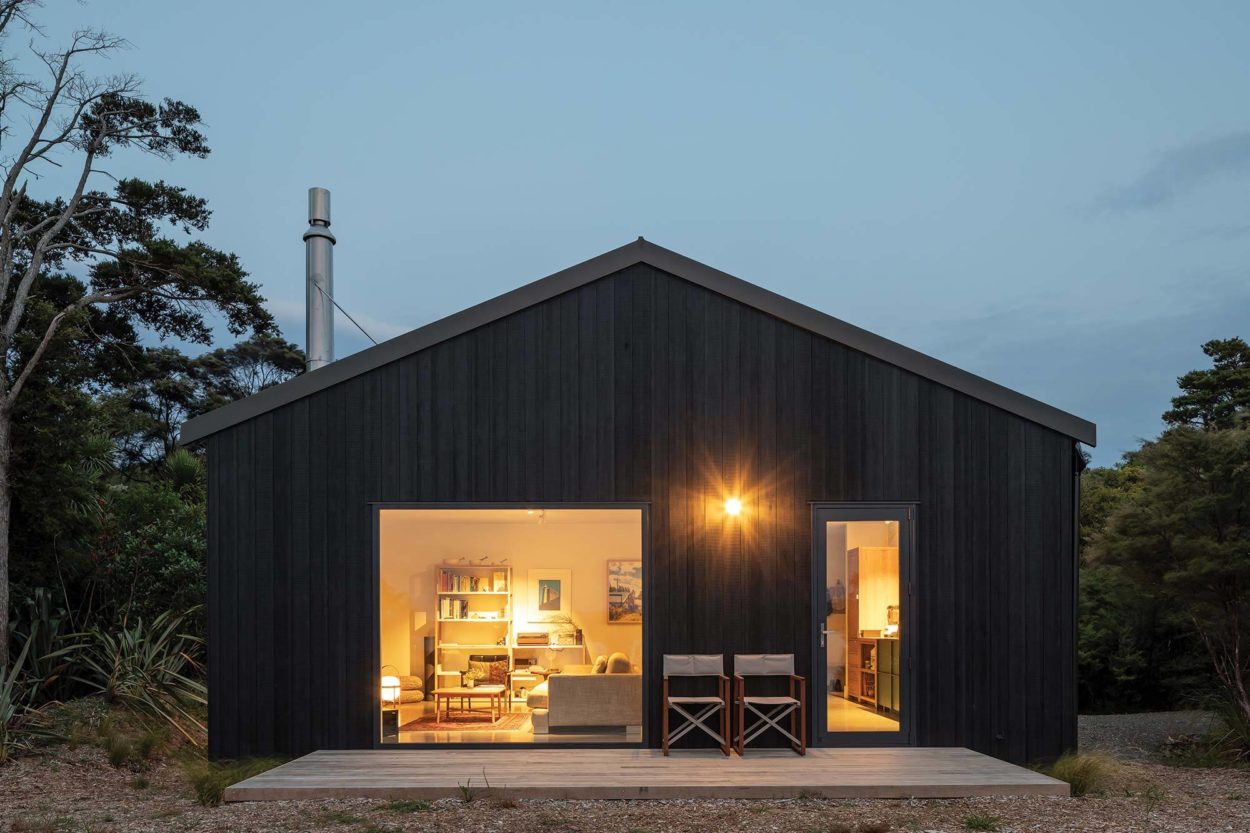Weed Identification
As we creep closer to spring, plans are made to get back into our gardens to work on the landscaping around our homes; once in the garden, it might come as a surprise some of the weeds that have sprung over the winter months! Rangitahi has been very active in culling out noxious weeds and using regenerative native planting to help restore biodiversity on the peninsula. Still, it's a constant battle, and we need your help! When working on the grounds around your home and walking around the peninsula, keep your eye out for some of the nasty weeds that are common in our area. Read on below to see a list of weeds that we are actively trying to eradicate. They can hinder native plant growth, be toxic to children and dogs, and cause respiratory problems in allergy-sensitive people. If you have any of these weeds on your property, please destroy them and if you see any popping up around Rangitahi, let us know! Together we can make a pest-free Rangitahi.
Identifying pest weeds:

Woolley Nightshade
What does it look like?
- Spreading, capsicum-smelling shrub or small tree
- covered in dusty hairs and whitish, branching, soft-woody stems.
- Velvety, oval, grey-green leaves (10-35 x 3-15 cm) are whitish underneath with prominent 'ears.'
- Dense clusters of mauve to purple flowers. From January - December with, yellow anthers are followed by clusters of round berries that ripen from hard green to soft, dull yellow.
Why is it a pest?
- Aggressive and fast-growing, woolly nightshade forms dense stands which crowd out all other plants.
- Woolly nightshade is allelopathic, which means it creates toxins that poison the soil preventing other plants from growing.
- It inhibits or prevents the regeneration rate of native forests.
- The dust from the leaves and stems can irritate the skin, eyes, nose, and throat.
- The berries are poisonous to humans if eaten, particularly to children
- Vigorous growing habit, seedlings established in summer can produce seeds by autumn.
- Seeds can remain dormant in the soil and germinate up to 20-30 years later.
More information: https://www.weedbusters.org.nz/what-are-weeds/weed-list/woolly-nightshade

Privet
What does it look like?
- Evergreen tree or dense shrub with distinctive lumpy ‘warts’ on the stem.
- Dark green, glossy leaves.
- Tiny, fragrant, creamy flowers make up large flower heads from November – March. Followed by small purplish-black berries coated with a powdery ‘bloom’.
Why is it a pest?
- Fast growing and can live up to 100 years old.
- Forms very tall dense stands that dominate native bush and crowd out other trees.
- The leaves and berries are poisonous, particularly for small fauna such as insects.
- Produces many seeds that are spread widely by birds.
- Very tolerant of shade, frost, grazing, a wide range of temperatures, soil types, salt, wind, and damp to drought conditions.
- Can cause respiratory issues for allergy & asthma sufferers
More information: https://www.weedbusters.org.nz/what-are-weeds/weed-list/tree-privet/

Climbing Asparagus
What does it look like?
- A slender, scrambling or climbing perennial with green multibranched stems up to 2m long which twine readily.
- Fine, fern-like foliage, small delicate leaves attached to hook vines.
- Leaves are narrow and lance-shaped, flattened, and curved cladodes, which are in threes at each node 5-15mm long.
- Stems are green and strongly bind to support being multi-branched at the top.
- Tiny white flowers appear from September to December, followed from October to February by round berries (8mm in diameter) that ripen from green to orange-red and contain 1-2 seeds each.
- It is very similar to bushy asparagus; however, bushy asparagus has larger, spiny leaves and thicker stems.
Why is it a pest?
- It forms dense patches on the ground and in the sub-canopy in most forest types with tough, long-lived tubers that re-sprout easily, particularly through dumped vegetation and contaminated soil.
- Climbing asparagus can ring bark, kill soft-barked shrubs and trees, and invade areas where epiphytes are usually found.
- Carpets forest floor and prevents regrowth of native seedlings.
- Very shade tolerant and fast growing.
More info: https://www.weedbusters.org.nz/what-are-weeds/weed-list/climbing-asparagus/

Brush Wattle
What does it look like?
- Short-lived tree (<5-10 m) with densely hairy ribbed twigs and bronze, hairy young shoots.
- Alternate frond-like leaves (20-30 cm) are twice divided along the midribs with 8-15 pairs of main subdivisions and 20-40 pairs of linear leaflets, which are silky underneath.
- Tiny, numerous, green-yellow flowers in flowerheads (5 x 5-10 cm, May-Aug) resembling a bottlebrush are followed by flat, green to brown seed pods (8-15 cm) containing foul-smelling seeds.
Why is it a pest?
- Fast growing and maturing.
- Produces many long-lived seeds.
- Tolerates high to low rainfall, poor soils, salt, wind, and low fertility (fixes nitrogen).
- Grows tall, rapidly establishing and shades out low-growing vegetation.
More Info: https://www.weedbusters.org.nz/what-are-weeds/weed-list/brush-wattle/

Pampas
What does it look like?
- Large-clump-forming grass (<4 m+).
- The leaf base is smooth or sparsely hairy, with no white waxy surface.
- Leaves are blueish-green above and dark green below and have a conspicuous midrib that does not continue into the leaf base.
- Dead leaf bases spiral like wood shavings. (Toitoi do not)
- Erect, dense, fluffy, white-pinkish flowerheads (Jan-Jun) fade to a dirty white as seed forms.
Why is it a pest?
- Seeds are spread very long distances by wind and occasionally water.
- It quickly becomes dense and massive amounts of well-dispersed seeds are produced.
- Replaces groundcovers, shrubs, and ferns,
- Creates fire hazards,
- It provides habitats for possums and rats and impedes access.
- Tolerates heat and frost, salt, wind, wet and drought, moderate shade, most soils, low fertility, and recovers quickly after fire.
More Info: https://www.weedbusters.org.nz/what-are-weeds/weed-list/pampas/

Inkweed
What does it look like?
- Bushy, spreading, hairless, smelly, perennial subshrub (<2 m tall, more if supported) with a very deep, pliable taproot.
- Hollow and brittle stems are softly woody near the base, usually reddish, much branched, with numerous white dots of crystalline calcium oxalate inside.
- Narrow-oval leaves (40-150 x 15-50 mm) are alternate and light green when young but occasionally turn reddish in autumn.
- Dense, erect, cylindrical flower clusters (up to 7 cm long, Nov-Aug) turning from green to pink are produced along the main stem, followed by succulent, purple-black berries (8 mm in diameter) with dark red juice containing seeds.
Why is it a pest?
- Grows and matures quickly, producing many well dispersed, long-lived seeds.
- Tolerates damage, wind, fire, all loose soils, and wet to moderately dry conditions but is intolerant of deep shade, deep humus and heavy frost.
- Leaves and berries are toxic.
- Competes for space and nutrients in pioneer plant communities and can temporarily inhibit the establishment of seedlings of native plant species.
More Info: https://www.weedbusters.org.nz/what-are-weeds/weed-list/inkweed/

Gorse
What does it look like?
- Sharply spiny shrub (<2-3 m tall) with woody erect or spreading stems which are many-branched in younger plants but become bare at the base as the plant ages.
- Leaves are reduced to spines. Spines are deeply furrowed.
- Pea-like yellow flowers (13-20 mm long, May-Nov, sometimes all year) are followed by hairy seed pods (13-25 mm long), which turn black when mature and explode to release seeds.
Why is it a pest?
- Forms pure associations temporarily in many habitats, inhibiting the establishment of native plant seedlings.
- Increased nitrogen in poor soil types changes native species ability to grow there.
- Produces massive numbers of long-lived seeds, matures and grows rapidly, and is versatile about habitat.
- Tolerates hot to cold temperatures, high to low rainfall, wind, salt, damage and grazing, and all soil types.
- Explosion of seed pods spreads seed up to 5 m from the parent plant.
More Info: https://www.weedbusters.org.nz/what-are-weeds/weed-list/gorse/

Banana Passionfruit
What does it look like?
- Vigorous, evergreen, high-climbing vines (<10 m) with long, densely hairy stems which are angular when young, and which have many spiralling tendrils.
- Leaves are 3-lobed (each lobe 5-14 cm long) with middle lobe the longest, edges serrated, and undersides covered in down.
- From Jan-Dec pink hanging flowers (7 cm diameter) with central tube (60-95 mm long) are followed by hanging, thin-skinned fruit (7-12 x 2-4 cm) ripening from green to yellow or orange, with sweet edible orange pulp and dark red seeds (4-6 mm long).
Why is it a pest?
- Grows to medium-high canopy, where it forms large masses.
- Grows rapidly in most soil types, and produces highly viable seed in two years.
- Partly tolerant to shade, damage and drought, and stems root where they touch the ground.
- Smothers canopy, prevents native plants from establishing.
- Allows faster-growing or tougher vines to succeed it in dominating canopy.
- Appears in light wells away from parent plant.
More Info: https://www.weedbusters.org.nz/what-are-weeds/weed-list/banana-passionfruit/

Blackberry
What does it look like?
- Scrambling, very thorny, semi-erect shrub that is usually deciduous, with large root crowns and long suckers.
- Stems arching (occasionally semi-prostrate), entangled, green or red and occasionally taking root when in contact with the ground.
- Variously shaped (usually cut-edged), flat leaves are arranged alternately on the stems.
- White to pink 5-petalled flowers (Nov-Apr) followed by clusters of black berries (Nov-May).
Why is it a pest?
- Forms dense, long-lived clumps, scrambles over the ground and low plants,
- Has an extensive rhizome system, occasionally layering and seeding.
- Tolerates most soil types, drought and flood but is intolerant of dense shade.
- Smothers most low growing species, inhibiting the establishment of native plant seedings, and impedes access.
More Info: https://www.weedbusters.org.nz/what-are-weeds/weed-list/blackberry/

.svg)





































































































.svg)